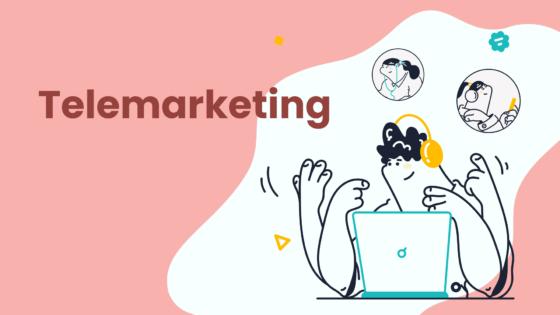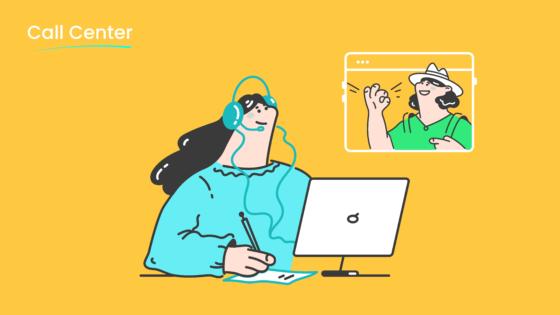Difference Between Customer and Client and Why It Matters Today

The difference between customer and client shapes how businesses interact with people. A customer usually buys a product or service in a one-time transaction, while a client often receives ongoing, personalized support. This difference between customer and client holds great value for companies using contact center solutions like Sobot AI. The importance of understanding these terms impacts how teams build relationships and deliver service. Sobot tailors its omnichannel solutions to support both types, helping brands like Michael Kors achieve a 95% satisfaction rate. Every business should consider how this distinction fits into its own model.
Difference Between Customer and Client

Customer Defined
A customer is a person or organization that purchases goods or services from a business. This interaction is often transactional and may not involve a long-term relationship. Customers can buy products in a store, order online, or use a service once without further engagement. Businesses often segment customers by demographic, geographic, or behavioral data to better understand their needs. For example, the Library of Congress guide highlights how companies use interviews, surveys, and analytics to gather information about customer preferences and habits. This approach helps businesses like Sobot tailor their contact center solutions to meet the unique needs of customers in retail, finance, and other industries.
Note: Customers are essential for every business. They drive sales and influence product development through their feedback and purchasing behavior.
Client Defined
A client is a specific type of customer who receives professional services, often over a longer period. The relationship between a business and its clients is usually more personal and ongoing. Clients expect tailored advice, dedicated support, and regular communication. For example, in the financial sector, clients may work with advisors who understand their goals and provide customized solutions. Sobot supports this model by offering unified communication tools and AI-powered automation, enabling businesses to manage complex client relationships efficiently.
Clients often require more attention and specialized service than customers. They may sign contracts, schedule regular meetings, and rely on a business for expert guidance. This difference between customer and client shapes how companies organize their teams and deliver value.
Key Characteristics
The client vs customer distinction influences business strategy, service delivery, and resource allocation. Here are the main differences:
| Aspect | Customer | Client |
|---|---|---|
| Relationship | Transactional, often short-term | Ongoing, relationship-based |
| Service Model | Standardized, less personalized | Customized, highly personalized |
| Engagement | One-time or occasional purchases | Regular, scheduled interactions |
| Support | General customer support | Dedicated account or success manager |
| Example Industry | Retail, e-commerce, gaming | Finance, consulting, enterprise services |
- The difference between customer and client is not just about terminology. It affects loyalty, spending behavior, and how businesses design their service models.
- Companies like Sobot recognize this distinction and adapt their solutions accordingly. For instance, Sobot’s omnichannel platform helps retail brands manage high volumes of customers, while its unified workspace and automation features support businesses that serve clients with ongoing needs.
- In Sobot’s experience, retail customers often seek quick answers and efficient service. In contrast, clients in enterprise services expect a deeper relationship, regular updates, and proactive support.
Tip: Clear definitions of customer and client help businesses improve satisfaction and retention. Companies can assign resources more effectively and build stronger relationships by understanding who they serve.
Market research confirms the importance of this distinction. Businesses that clearly define customer and client roles can tailor their strategies, improve service delivery, and achieve better outcomes. For example, Michael Kors, a Sobot client, unified its customer service channels to deliver both efficient support for customers and personalized experiences for clients, resulting in a 95% satisfaction rate.
Client vs Customer in Service Models

Transactional vs Relationship-Based
The client vs customer distinction shapes how companies design their service models. Customers often seek quick, efficient transactions. Businesses focus on immediate sales, fast responses, and operational efficiency. This approach works well in retail, e-commerce, and gaming, where customers expect fast solutions and clear communication.
Clients, on the other hand, expect a long-term relationship. They value ongoing support, personalized advice, and regular updates. Companies serving clients invest in building trust and understanding unique needs. This relationship-based model appears in finance, consulting, and enterprise services.
| Service Model | Key Metrics & Focus |
|---|---|
| Transactional (Customer) | Sales revenue, conversion rate, average order value. Prioritizes speed and efficiency. |
| Relationship-Based (Client) | Customer lifetime value, net promoter score, churn rate. Focuses on loyalty and sustainable growth. |
- Transactional models deliver quick returns but risk customer churn.
- Relationship-based models require more investment but build loyalty and stable revenue.
Companies often blend both models, using CRM tools and loyalty programs to balance short-term gains with long-term value.
Sobot Voice/Call Center Applications

Sobot adapts to both client vs customer models with its advanced contact center solutions. For customers, Sobot’s Voice/Call Center handles high volumes of calls and messages, ensuring fast, reliable service. The system supports over 6 million daily online communications and maintains 99.99% uptime, so customers always receive prompt attention.
Clients benefit from Sobot’s unified workspace and AI-powered automation. These features help agents manage complex client relationships, track ongoing cases, and deliver personalized support. Sobot’s omnichannel integration ensures clear communication across voice, chat, and social media, making it easy for clients to stay connected.
- Sobot’s solutions have increased customer satisfaction scores by over 30% and net promoter scores by 35%.
- AI-driven features reduce waiting times by 35%, improving both customer and client experiences.
- Michael Kors, a Sobot client, achieved a 95% satisfaction rate by unifying customer and client interactions on one platform.
Sobot’s flexible approach allows businesses to serve both customers and clients effectively, supporting both transactional needs and long-term relationship goals.
Why the Difference Matters
Impact on Strategy
Recognizing the difference between customer and client shapes a company’s business strategy. Businesses that treat buyers as clients, not just customers, build deeper partnerships and foster a long-term relationship. This approach leads to more repeat business and helps companies stand out in a crowded market. Research shows that companies focusing on building long-term relationships with clients gain loyalty, valuable feedback, and collaborative growth. Differentiation strategies, such as those used by leading brands, rely on understanding the depth of relationship with each group. Sobot’s omnichannel solutions help businesses segment their audience and personalize service, supporting both transactional and relationship-based models. Michael Kors, for example, unified its service channels with Sobot, improving both customer and client experience and achieving a 95% satisfaction rate.
Customer Experience
Customer experience and overall client experience drive loyalty and business growth. Many companies believe they deliver excellent service, but only a small percentage of customers agree. This gap highlights the need for businesses to tailor experiences for both customers and clients. Personalization, powered by analytics and AI, allows companies to anticipate needs and create seamless journeys. Sobot’s unified workspace and AI-driven insights enable agents to deliver differentiated experiences, whether handling a quick customer inquiry or managing a long-term client relationship. Metrics like Net Promoter Score (NPS) and Customer Satisfaction (CSAT) help measure success and guide improvements. Companies that focus on building long-term relationships see higher customer lifetime value and more repeat business.
Tip: Personalized service and proactive support turn one-time buyers into loyal advocates, strengthening long-term connections.
Resource Allocation
Understanding the client vs customer distinction helps companies allocate resources more effectively. Businesses can assign dedicated account managers to clients who need ongoing support, while using automation and self-service tools for high-volume customer interactions. Sobot’s platform enables this flexibility, allowing teams to balance efficiency with personalized care. By matching resources to the depth of relationship, companies improve both customer experience and overall client experience. This approach leads to better retention, more repeat business, and stronger business relationships.
- Companies that use analytics to optimize resource allocation report up to 60% improved customer retention and 58% higher satisfaction.
- Investing in building long-term relationships pays off with increased loyalty and sustainable growth.
Adapting with Sobot Solutions
Personalization and Automation
Sobot empowers businesses to deliver tailored experiences for both customers and clients. The platform uses AI-driven automation to handle routine questions from customers, freeing agents to focus on complex needs of clients. Customers often want quick answers. Sobot’s chatbot provides instant support, reducing wait times by up to 35%. Clients require ongoing attention. Sobot’s unified workspace lets agents track client history and preferences, ensuring every interaction feels personal. Automation tools help businesses manage high volumes of customers while still giving clients the dedicated service they expect. This balance leads to higher satisfaction for both groups.
Note: Personalization increases loyalty. Sobot’s analytics show that businesses using automation see a 30% boost in customer satisfaction and a 20% increase in client retention.
Unified Communication
Effective communication sits at the heart of strong relationships with customers and clients. Sobot’s omnichannel solution brings all channels—voice, chat, email, and social media—into one platform. Agents see every message from customers and clients in a single view. This unified approach prevents missed messages and ensures fast responses. Customers benefit from seamless support, while clients enjoy consistent updates and proactive outreach. Sobot’s Voice/Call Center supports global communication, so businesses can reach customers and clients anywhere. The platform’s 99.99% uptime guarantees reliable service for every interaction.
Industry Use Cases
Sobot’s solutions adapt to the needs of many industries. In retail, customers often ask about orders or returns. Sobot’s automation answers these questions quickly, while clients, such as wholesale partners, receive dedicated account management. In finance, customers seek help with transactions, and clients need ongoing advice. Sobot’s unified workspace helps agents deliver both. Michael Kors, a global fashion brand, used Sobot to unify communication channels. The result: an 83% reduction in response time and a 95% satisfaction rate for both customers and clients. In education, customers might request information, while clients, like partner schools, need regular updates. Sobot’s flexible tools support every scenario.
Tip: Businesses that adapt their service for both customers and clients see better results across all industries.
Action Steps for Businesses
Assess Your Audience
Businesses must first understand who they serve. Customers and clients have different needs and expectations. Companies can analyze online forums and communities to learn about language, interests, and pain points. Studying competitors’ audiences on websites and social media reveals target customers and marketing strategies. Interviewing industry experts and market analysts provides insights into what drives clients. Surveys and focus groups help gather direct feedback on product needs and preferences. Reviewing third-party customer data uncovers industry trends. Using both qualitative and quantitative research methods ensures a complete view of customers and clients. Sobot’s analytics tools allow businesses to segment audiences and identify patterns, supporting more effective customer engagement.
Tip: Properly designed surveys and interviews uncover what motivates clients and customers, helping businesses tailor their approach.
Train Your Team
Teams must understand the difference between customers and clients to deliver the right service. Training should focus on recognizing unique needs and building skills for clear communication. Companies can use real-world scenarios to help agents practice handling both quick customer requests and ongoing client relationships. Sobot’s unified workspace supports training by giving agents access to customer and client histories, making it easier to personalize interactions. Metrics such as ticket volume, backlog, and customer effort score show how training impacts performance. Regular feedback sessions and knowledge sharing help teams adapt and improve.
- Training increases team confidence and ensures clients receive the attention they expect.
- Companies that invest in training see higher customer satisfaction and more repeat business.
Measure Success
Measuring success ensures continuous improvement. Businesses can track metrics such as Net Promoter Score (NPS), customer churn, and support ticket volume. The table below highlights key metrics:
| Success Metric | Description |
|---|---|
| Customer Education ROI | Financial return from training programs |
| Course Completion Rate | Percentage of team members finishing training |
| Learner Satisfaction | Feedback on training usefulness |
| Number of Support Tickets | Change in support requests after training |
| Net Promoter Score (NPS) | Customer loyalty and advocacy |
| Customer Churn | Rate of customers leaving |
Sobot’s unified workspace and analytics dashboards provide real-time monitoring and benchmarking. These tools help businesses identify trends, optimize resource allocation, and align team efforts with business goals. Continuous measurement and feedback drive better outcomes for both customers and clients.
Understanding the difference between customer and client shapes business success. Companies that tailor support for each group build loyalty and boost satisfaction. Sobot’s solutions help businesses deliver exceptional service to both customers and clients. Key benefits include:
- Long-term client relationships foster repeat business.
- Personalized service increases satisfaction for both customers and clients.
- Targeted marketing and pricing strategies drive higher engagement and revenue.
- Exceptional support builds a strong reputation and lasting partnerships.
Sobot enables brands to evaluate their service models and enhance every customer and client interaction.
FAQ
What is the main difference between customer and client?
The main difference between customer and client lies in the relationship. Customers usually make one-time purchases. Clients receive ongoing, personalized service. Sobot’s solutions help businesses manage both types, supporting efficient transactions and long-term relationships.
Why does the difference between customer and client matter for businesses?
Understanding the difference between customer and client helps companies tailor their service models. Businesses can allocate resources better, improve satisfaction, and build loyalty. Sobot’s omnichannel platform supports both customer and client needs, leading to higher retention rates.
How does Sobot support both customers and clients?
Sobot provides an all-in-one contact center solution. The platform uses AI automation for quick customer responses and a unified workspace for managing client relationships. Companies like Michael Kors improved satisfaction by addressing the difference between customer and client with Sobot’s tools.
Can the difference between customer and client impact business growth?
Yes. Companies that recognize the difference between customer and client see better results. For example, Sobot’s clients report up to a 30% increase in customer satisfaction and a 20% rise in client retention after adapting their service models.
Where can I learn more about the difference between customer and client?
Readers can visit Sobot’s official website for detailed resources. The site explains how Sobot’s solutions address the difference between customer and client, offering case studies and industry insights.
Tip: Regularly review your service approach to ensure you meet both customer and client expectations.
See Also
Comparing Genesis Call Center And Genesys Solutions
Best Voice Of Customer Software Tools Reviewed
How AI Agents Are Transforming Customer Support
